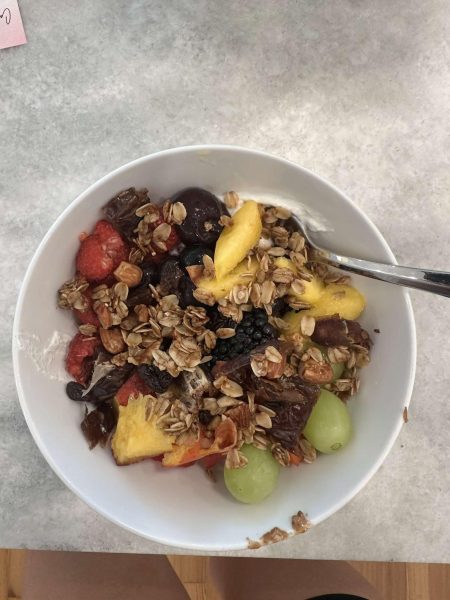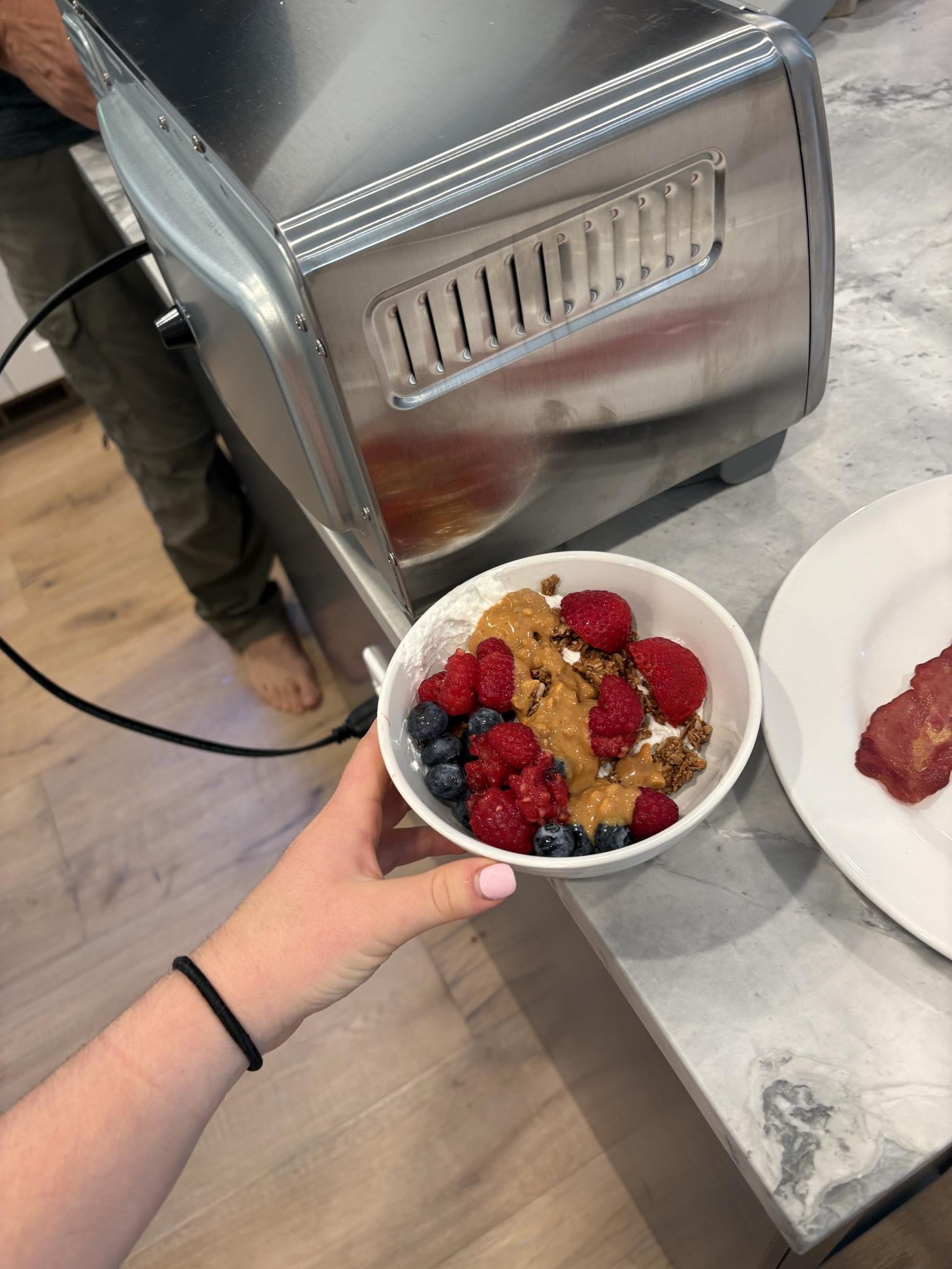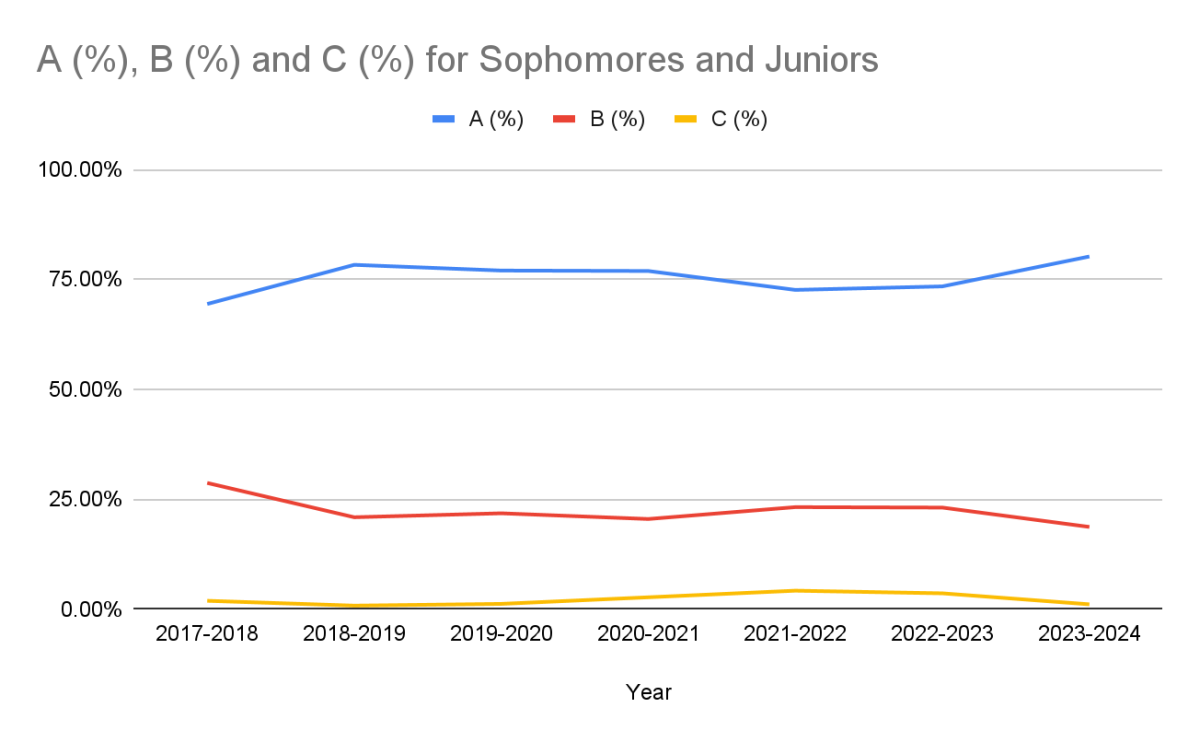Protein has taken over Gen Z. For centuries, the macronutrient has fallen in and out of food fads, yet the recent surge in popularity has reached unprecedented heights, capturing the minds and stomachs of millions worldwide, including Latin’s very own students.
The initial interest in protein in the early ‘70s arose due to its properties in aiding weight loss. When consumed, protein increases levels of cholecystokinin and glucagon-like peptide-1 (GLP-1), which contribute to digestion and signal fullness. These hunger-curbing properties, along with its ability to raise levels of ghrelin, keep people from overeating.
Beyond weight maintenance, protein helps increase muscle mass and strength as well as boost metabolism, all reasons to ensure an adequate amount of protein in a well-balanced diet.
Latin students, especially athletes, understand the importance of a protein-rich diet and often prioritize protein to help sustain energy and support their bodies after long practices. Junior and lacrosse player Mitch Moses has gravitated towards a high-protein diet. “Every morning and after each workout and practice, I make sure to have protein to help give me energy and maintain muscle so I can ensure my best performance.”
Latin athletic trainer Jessie Heider has seen these benefits firsthand and encourages students to eat protein after practice as a result. “Post-exercise protein is important because it aids in muscle growth and helps to repair the small tears in muscle fibers that occur during exercise,” she said. “Consuming protein after working out also helps reduce muscle soreness, which in turn helps to reduce recovery time."
These benefits are widely promoted on social media platforms, with influencers promoting high-protein diets and offering ideas for recipes rich in protein. While the high-protein movement was initially geared toward “gym bros” working to gain muscle, the recent boost in popularity has brought the fixation on protein to a wider audience.
According to a poll done by Statista, “In 2024, protein was the most frequently mentioned nutrient that consumers in the United States try to consume.” Whole foods such as cottage cheese, Greek yogurt, meat, cheese, and eggs commonly appear in recipes shared on social media, often added to boost the protein content of a meal.

Sophomore Elle Meyers incorporates one of the “trendy” high-protein foods, Greek yogurt, into her diet on a daily basis. “Before school, I like to eat something healthy that also tastes good, so I started eating Greek yogurt for breakfast,” Elle said. “I’ve heard that it is beneficial to start your day with protein, and I love yogurt bowls because you can put a variety of toppings onto them, which makes them new and exciting every day.”
The push for protein in the online food scene has spawned creative, nearly bizarre recipes such as Greek yogurt bagels, egg-based pancakes, chickpea cookie dough, and even cottage cheese ice cream.
The high-protein trends on TikTok have inspired Latin students such as junior Noor Bazzi to try these recipes for themselves. After making bagels out of cottage cheese, Noor was surprised to find that she enjoyed them.
“Although I had really low expectations, I made the bagels to try and find a healthy alternative to one of my favorite foods, and while they didn’t exactly mimic a bagel, they still were a delicious snack that made me full for a long time,” Noor said.
These obscure ways to consume protein have surpassed whole, nutritious foods and surfaced in the realm of ultraprocessed foods, including cereal, chips, popcorn, and even water. While these foods offer a quick and accessible way for people to eat protein, the obsession with protein intake comes with alarming costs. According to Yale Medicine, “A diet composed mainly of ultraprocessed foods also exposes people to unhealthy additives and increases the risk of chronic inflammatory diseases.”
In addition, ultra-processed foods with high sodium, fat, and sugar levels contribute to an unbalanced diet and can lead to poor health conditions, including but not limited to diabetes and cardiovascular diseases.
Although the craze about protein can get excessive, high-protein diets often provide a sense of community and even self among their followers. Food writer Elizabeth Dunn appeared on the New York Times podcast “The Daily” to talk about the reasons for America's obsession with protein.
“Eating protein has become something more like an identity or a lifestyle,” she said. “People seem to get a sense of belonging from the types of diets they follow. There’s sort of a tribal quality to it. So I think there’s an element to this that’s also about fitting in with a group and finding your identity in a group of people with shared nutritional goals.”
Whether people eat protein for its nutritional value or to fit into the larger cultural movement it forms, the obsession has transformed the landscape of diet culture: emphasizing the essential nutrient and shaping the meal choices for millions.











